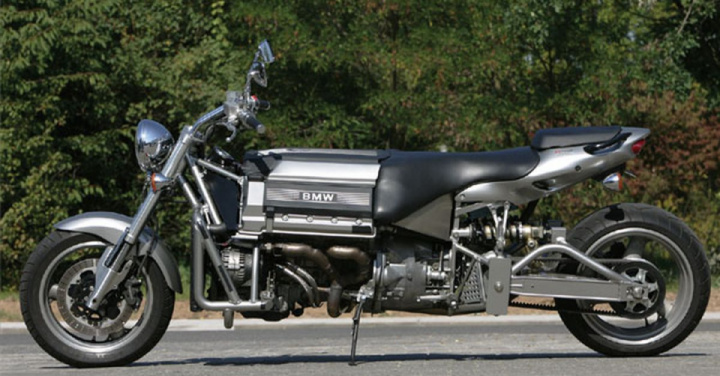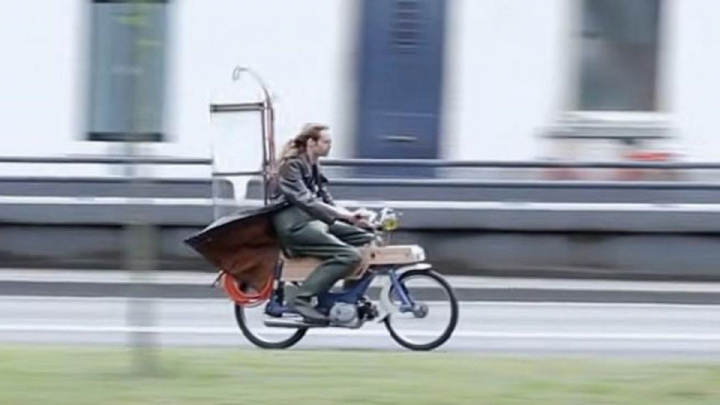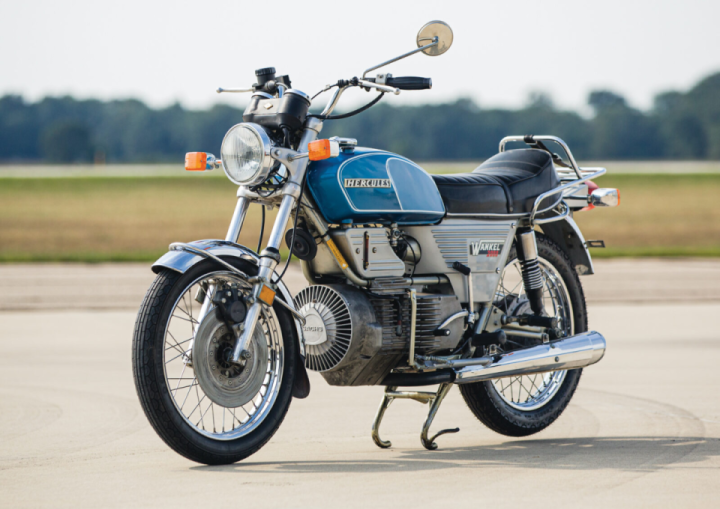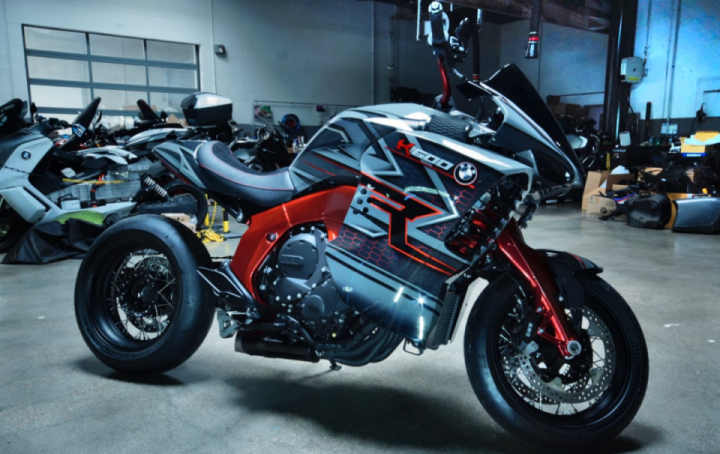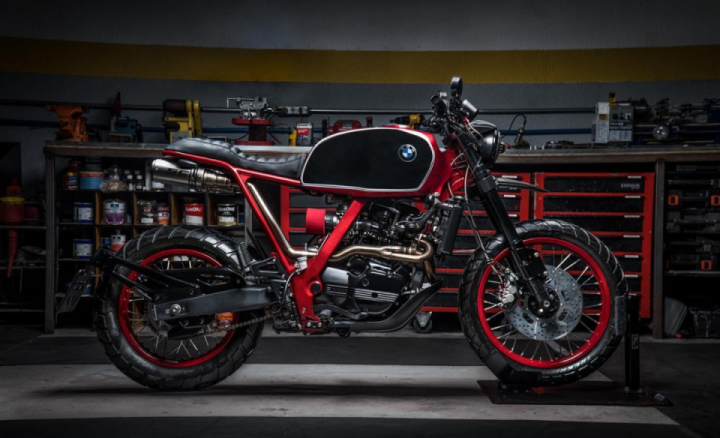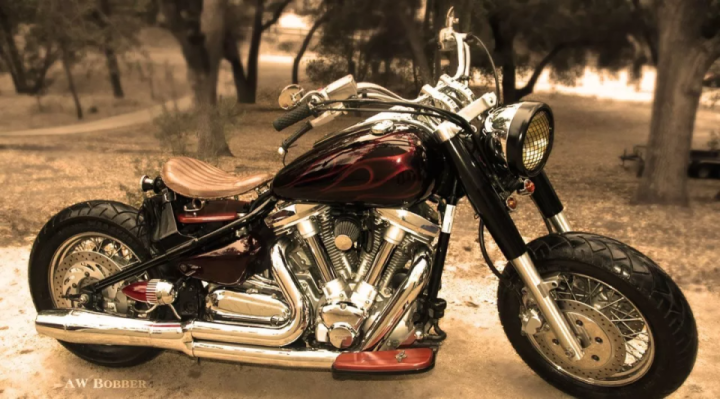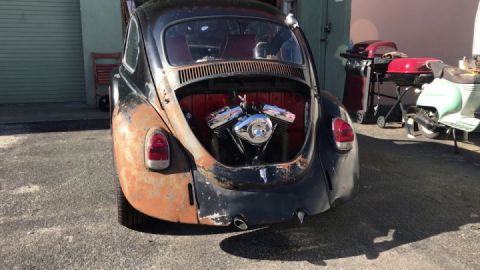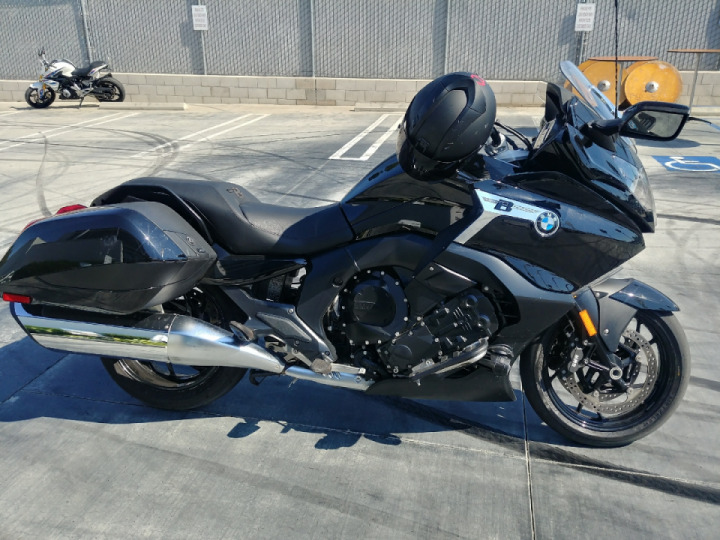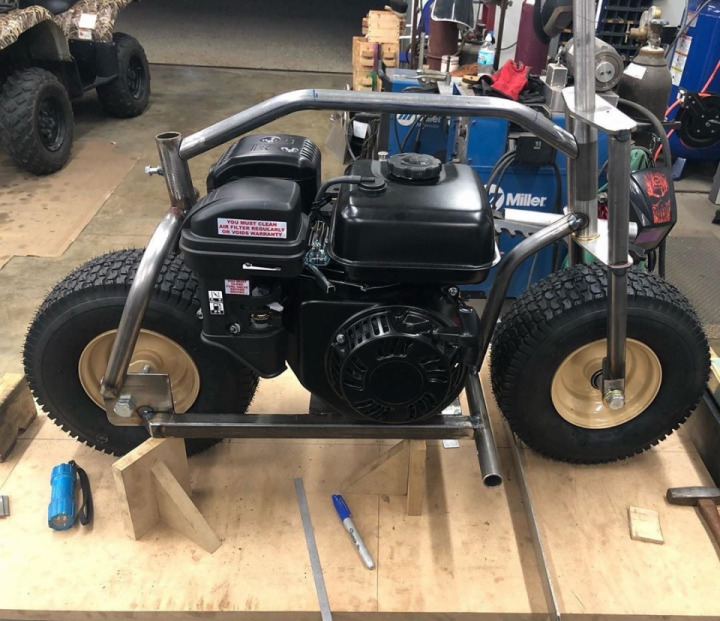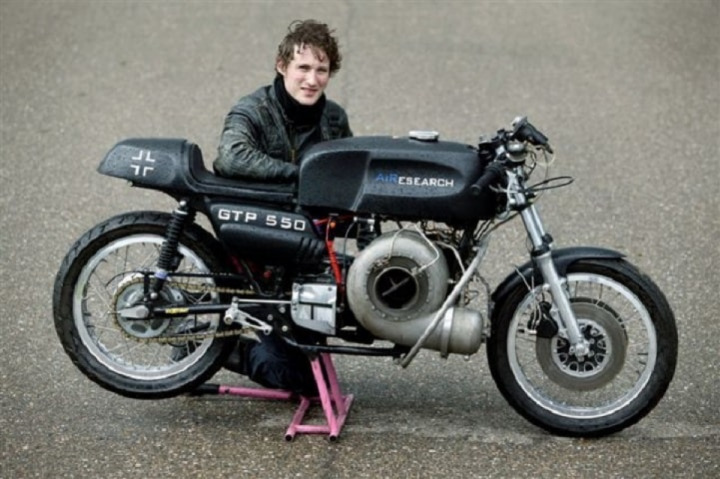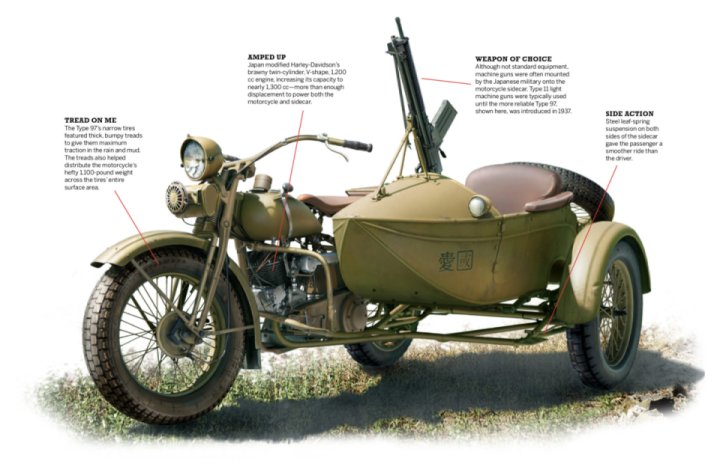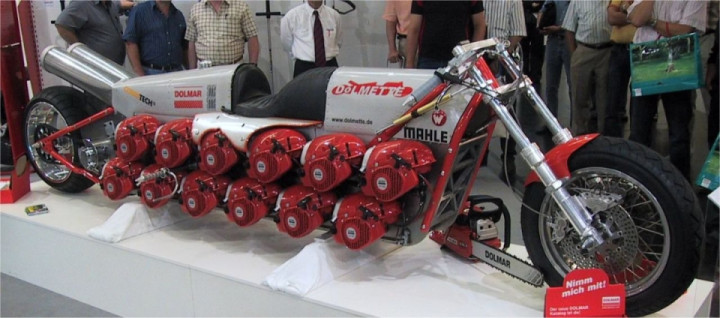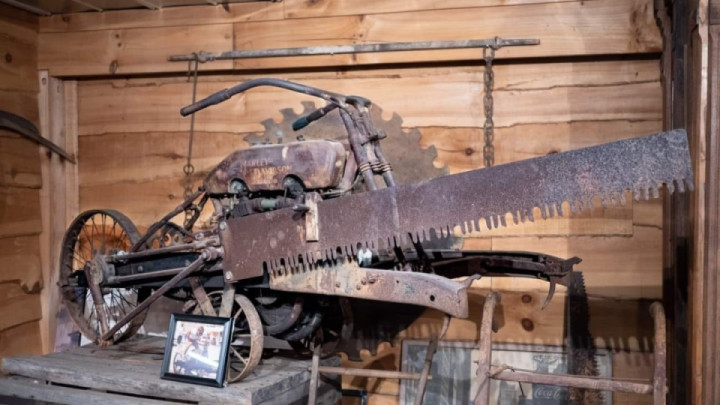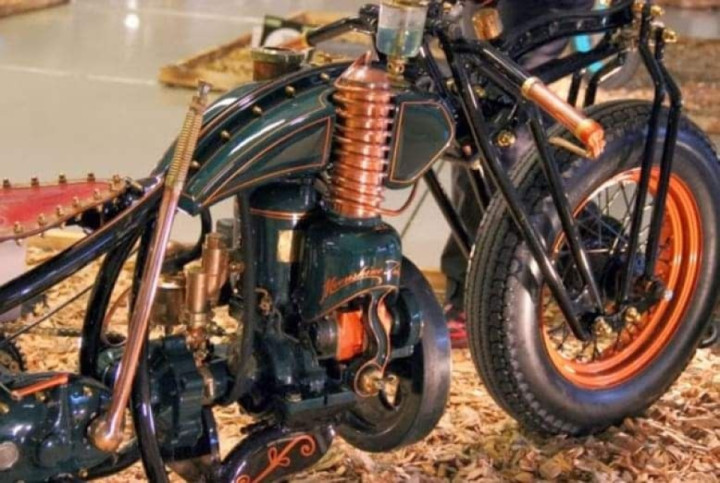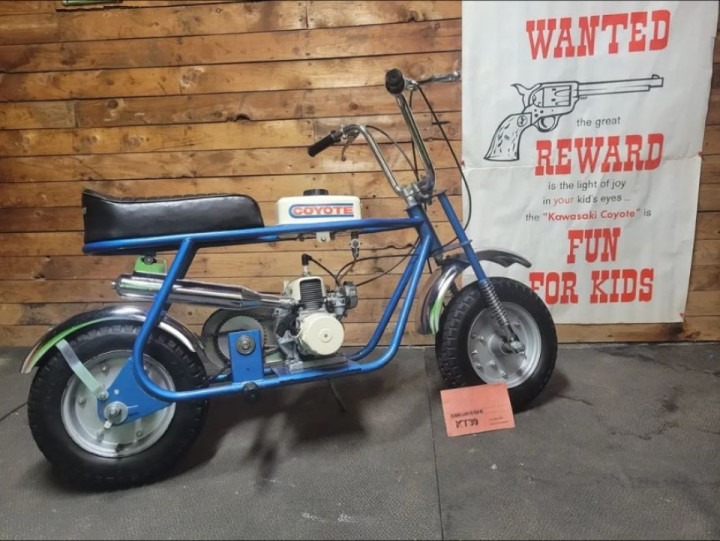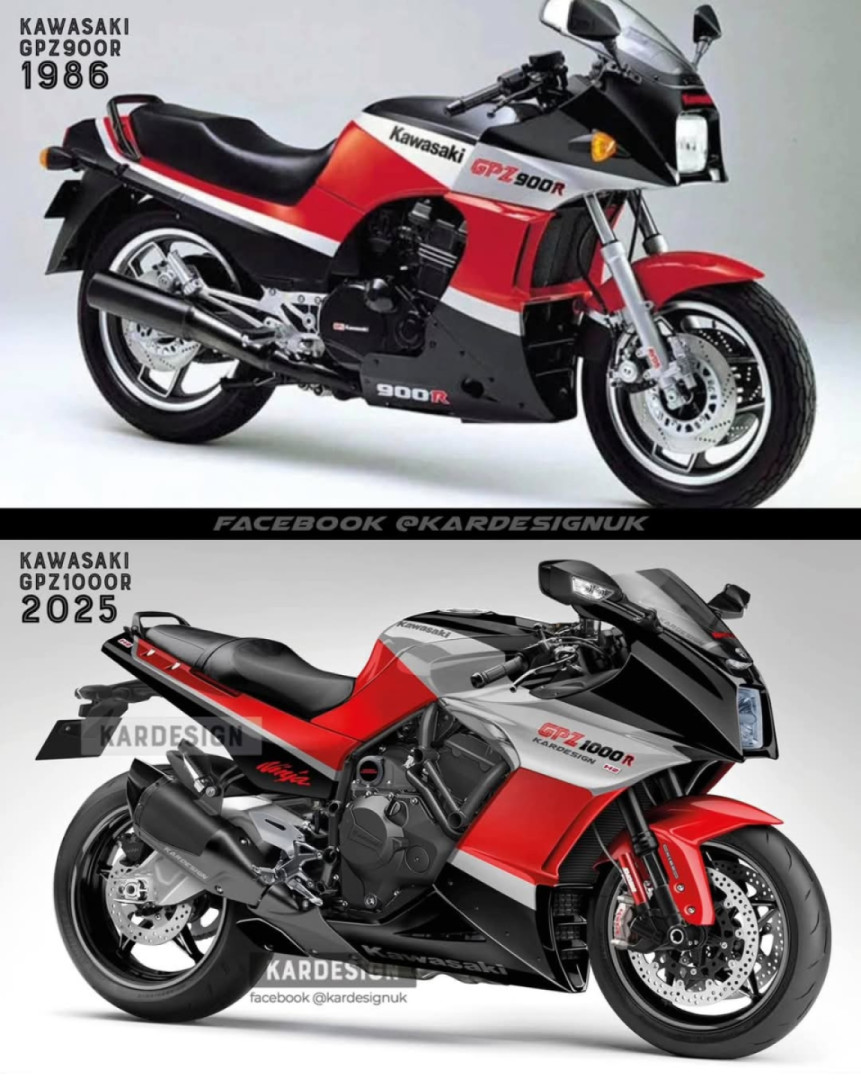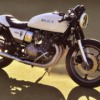Amazonas 1600 - Beetle Powered Brazilian Behemoth
A wisened old git by the name of Dave, who was a passionate lifelong motorcyclist and successful vintage racer, once told me “There are no bad motorcycles. Just some that are better than others”. I’m quite certain old Dave never swung a leg over the 900-pound Beetle-powered behemoth from Brazil known as the Amazonas 1600, considered one of the best worst motorcycles in modern history.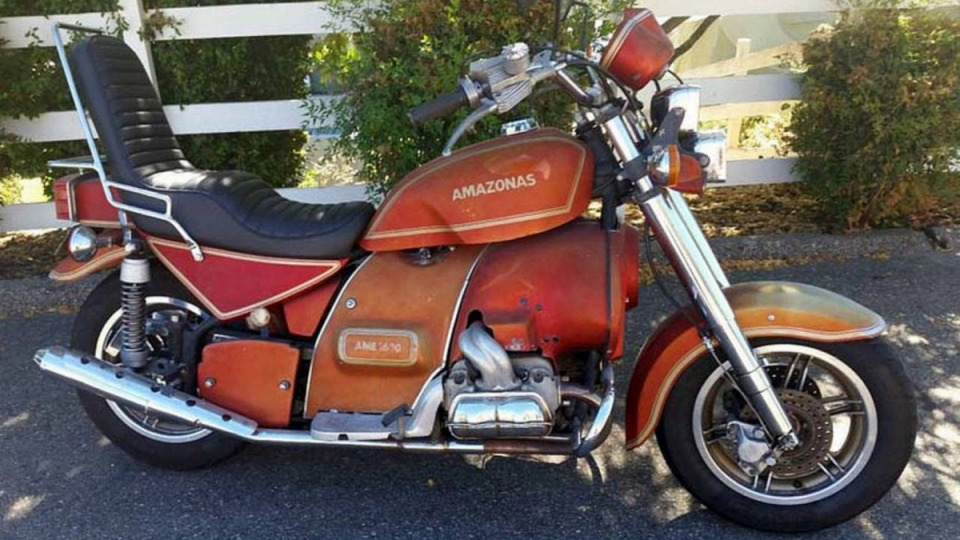
Seeing pictures of the Amazonas you can scarcely believe this monstrosity is a functional, mass-produced motorcycle that can be ridden by mere mortals. It looks horrifyingly huge and under developed, even at a glance. Seeing a proportionately-tiny rider perched atop it makes it look even more ridiculous. It looks like the bastard child of a Honda Gold Wing and a Boss Hoss, held together with the sort of shade-tree engineering and blind hope that would make Cletus think twice about putting his beer down and taking it around the block. It is hideous, overwrought, baroque, and utterly intimidating for all the wrong reasons. And that’s before you’ve even swung a leg over the damned thing.
And yet the Amazonas is a series production bike, with a loyal following and a reputation for staggering reliability and durability. It was the ride of choice for Brazilian police, the target demographic, to replace their ageing fleet of Harley-Davidsons. It was the product of ingenuity and backyard tinkering in a time of hardship, and it survived its humble beginnings to become an icon in South America.
The Amazonas was the product of a very specific set of circumstances present in Brazil in the late 1970s. A failing economy and heavy-handed protectionist policies meant that imported products were taxed into oblivion, which effectively precluded the import of motorcycles – and the parts to maintain them. This policy of import substitution industrialization was intended to bolster local production by forcing national production and was in place up until the 1990s – and consistently made Brazil a technological backwater.
As a result of the ISI measures the Brazilian police force maintained a fleet of antiquated Harleys that were fast becoming unserviceable, and without a home-grown motorcycle manufacturer there was no chance of the motorcades receiving anything up to date.
Sao Paolo based tinkerer Daniel Rodriguez saw the gap and decided he would design and build a motorcycle to suit the needs of the police force. It would have to be rugged, reliable, easy to maintain, and built with existing parts – parts that were produced in Brazil to avoid the problem of import duties. As Volkswagen had been manufacturing the Beetle in Brazil since the 1950s, it made sense to use VW parts… In Rodriguez's mind, anyway. He set about building a hulking touring machine around the cockroach-tough air-cooled 1600cc Type 1 VW motor and transmission, and in 1977 the mighty Amazonas was unleashed upon an unsuspecting world.
The motor was standard Beetle fare, right off the Brazilian production line – an air-cooled flat four displacing 1584cc via an 85.5x69mm bore/stroke. Compression was a lowly 7.2:1, and your valves were opened by pushrods. Nothing exotic to be found here. On standard models a single Ford Escort carburettor was mounted inboard and split between the two cylinder banks. On the, um, “sporty” superEsporte you got a pair of carburettors in the wind. Neither version offered much in the way of power; 50 ish horsepower for the basic 1600. Supposedly some models were available with the poverty-spec 1300cc engine wheezing out 38hp. On the plus side you got a decent amount of torque, around 75 lb/ft for the 1600. Or it would have been a decent amount, had the brute not weighed a gnat’s ass under 900 lbs with a full tank of gas.
Everything on the Amazonas was the product of meagre resources. The disk brakes were taken off a Ford car, while a VW master cylinder was modified to operate from the handlebars. The stock VW four-speed transmission was retained, complete with a functional reverse gear (turns out it was needed considering the heft of the thing). The final drive was crudely adapted to a chain by welding the differential gears and driving a sprocket off one of the half shafts. The suspension was designed by Rodriguez and was wholly incapable of the task demanded of it. The frame was a crude duplex tube design that ignored the possibility of using the boat-anchor engine as a stressed member. The various bits are pieces were cobbled together from odd sources and finished with rough-looking trim and bodywork. It may have been ugly, but at least it was crude.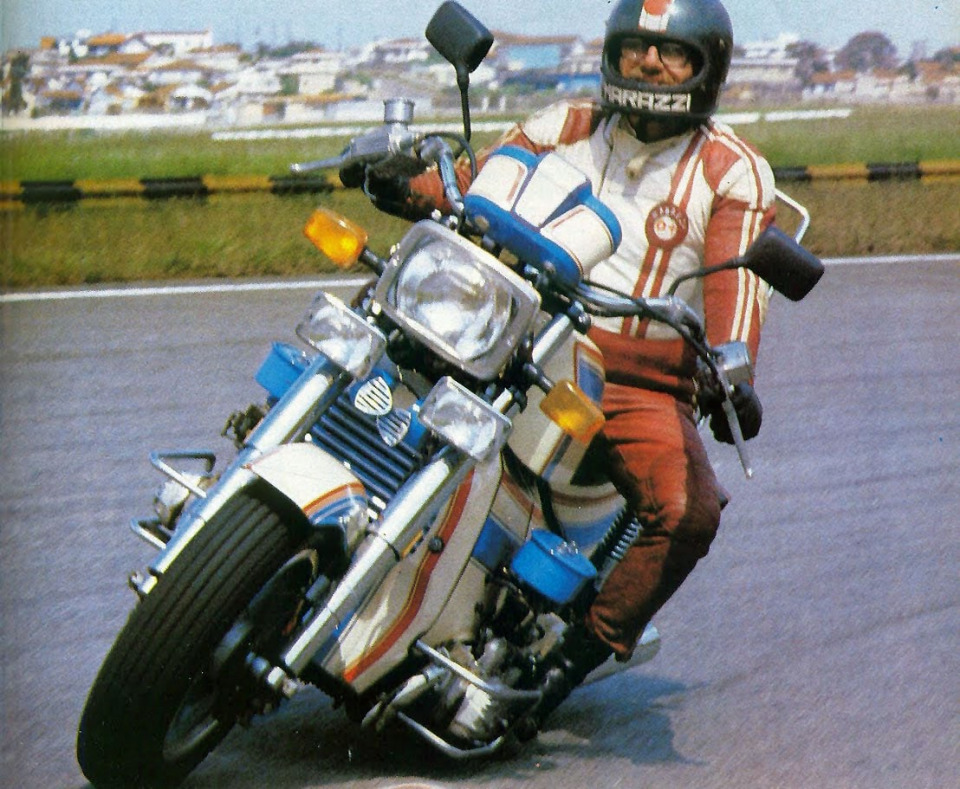
Despite the rough quality of the finished product, the Amazonas was accepted and became the Brazilian police mount of choice during the 1980s – not that they had much choice. Incredibly, despite the backyard manufacturing, the Amazonas proved to be a remarkably resilient machine. Duty bikes racked up impressive mileage with minimal maintenance. And if anything did go wrong, any backwater mechanic who could distinguish his ass from a Crescent wrench could fix the simple Veedub mill with a hammer and a rubber band.
If one were so inclined there was a multitude of go-fast goodies available to hop up the Beetle motor and make a hot-rod Amazonas that could potentially get out of its own way. In fact Cycle World built a 2275cc monster motor for their test bike in 1985 and managed to knock the quarter mile time from 17.96 down to 13.28 seconds (with a second gear start due to transmission problems) – but only after they had dumped 2000$ into the engine and tripled the horsepower.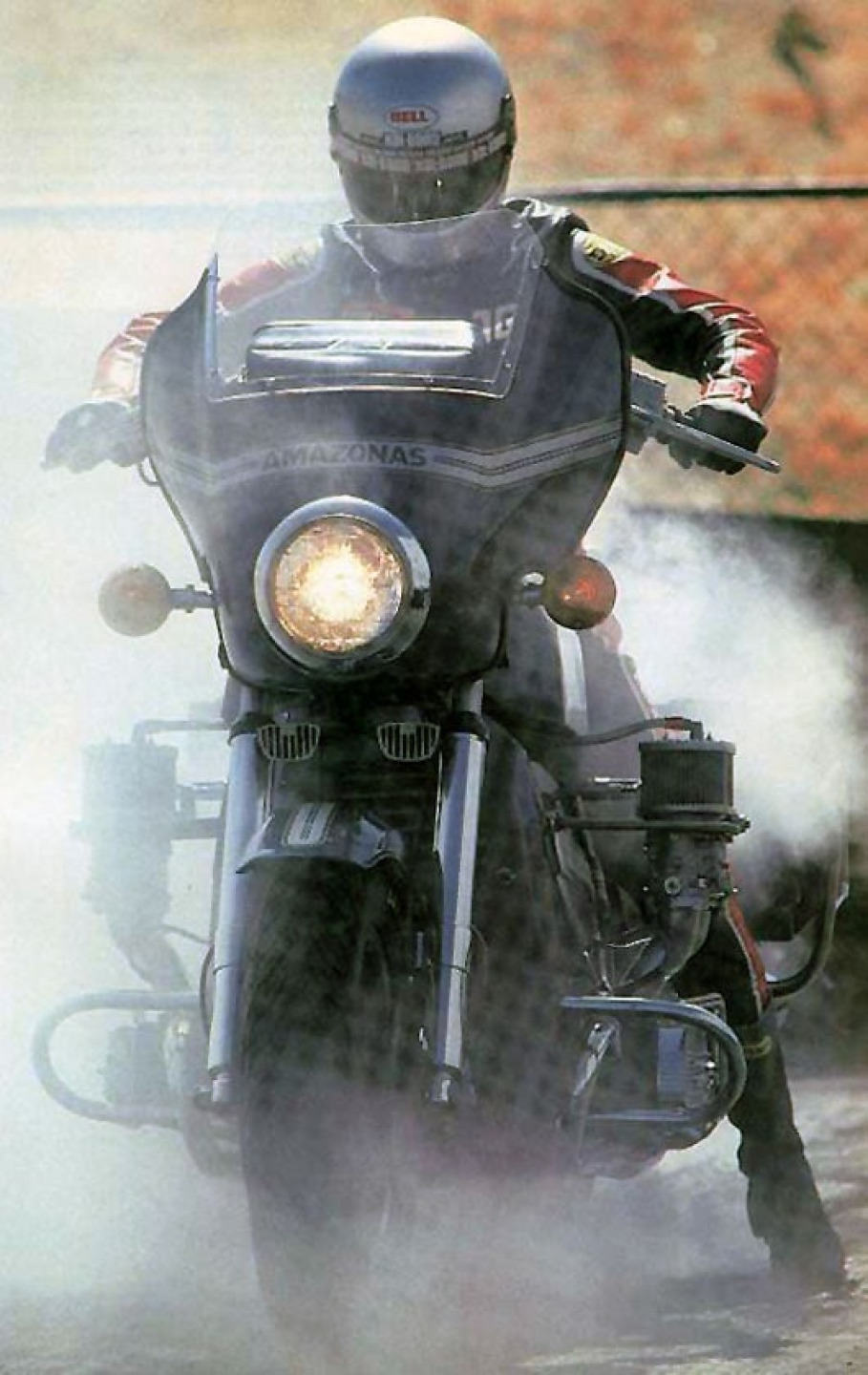
In Brazil, the Amazonas was the only game in town and developed a cult following. In the mid-80s, at the height of production, four main models were available – the basic eSporte, the sporty-er superEsporte, the bagger’ed up Turismo, and the government-issue Policial. Prices in 1984 were from $4000 USD and up.
Outside of the country, the odd brute was a curiosity. It was often derided as the ugliest motorcycle in the world, and probably one of the worst to ride. Cycle World reviewed the 1600 and their polite restraint is palpable on the page. It’s clear that the Amazonas was utterly horrific to ride. Slow, heavy, under braked, clunky controls, square-tyred, and with a non-existant “suspension”, it was a disaster to ride for anyone familiar with modern motorbikes. Reviews convey a curious fascination with how crude and unusual it was compared to… Everything. Once you looked past the charm of a cobbled together, tough as Twinkies, Beetle-powered cruiser it was clear that the Amazonas was quite terrible in every conceivable metric.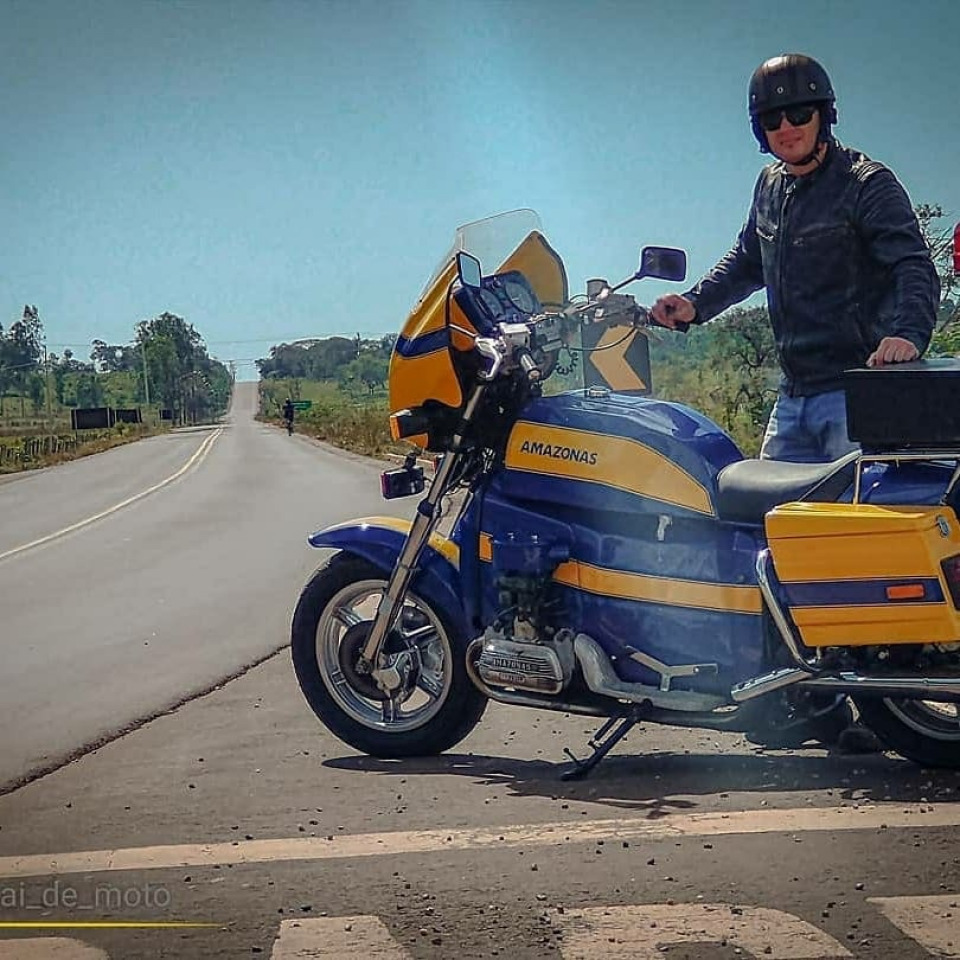
And yet production soldiered on and the Amazonas gained a loyal following from bike-hungry Brazilians who had little to choose from in their tightly restrained market. About one quarter of production was dedicated to service bikes, the remainder sold to the public. There were even a few examples exported to other countries, though never enough to challenge Ural’s dominance of the comically terrible export motorcycle market. Not that it was particularly cheap – in 1988, one of the final years of production, the 1600 was a pretty substantial $8500 USD.
In the early 90s the original 1600 was getting a bit long in the tooth (actually, it was stone cold dead in the market) and a more “modern” replacement was needed. Or at least someone out there believe a modernized Amazonas was needed and set about building it. The slightly-less abominable but virtually unknown 1600 Kahena was the result. Outside of a few promo images and some used bike listings in Brazil, details about the Kahena are virtually non-existent. From what I can gather the it was introduced between 1990-92 and featured a twin-spar frame, dubbed “Tecbox” in ugly script right across the beams, and a new swingarm design. It produced by a new company by the name of TECPAMA in Sao Paolo - the original Amazonas works had closed in 1989. The bodywork was modernized (complete with the requisite swoopy RADICAL neon graphics that were standard issue on all early 90s machines) and the component quality appeared much improved over the original models. You got better brakes, real motorcycle tires, modern controls, and shaft drive. The engine was still the venerable and execrable VW 1600, now with 64 hp and a whoppin’ 7.5:1 compression ratio, and despite the trappings of modernity the Kahena was still massive, oddly proportioned, and quite ugly – except now it looked like a morbidly obese superbike, instead of a Harley with downs syndrome. On the plus side, weight was trimmed to a positively svelte 675 lbs dry.
All told about 450 Amazonas 1600s were produced, along with an unknown number of Kahenas (if anyone in Latin America has some insight into the Kahena please share it in the comments). The bike remains a curiosity to those of us outside Brazil, but up until recently it still had a loyal cult following and a dedicated owner’s club. Globe-trotting motorcycle adventurer Greg Frazier toured across Brazil on an Amazonas 1600 in 2000 and offered these anecdotes about the experience on his travelogue:
I was also introduced to the Amazonas Moto Clube and shown how truly "in love" the members are with the Amazonas Motorcycle. One former owner of an Amazonas nearly cried when I told him if I had a choice I'd rather be riding an Amazonas than a Harley-Davidson. When he asked, in amazement, "Why?" I told him, "Harley-Davidson is everywhere, but there were only 450 Amazonas Motorcycles made." He went on to say that he had sold his Amazonas three months before and went to a Yamaha V-Max, but deeply regretted letting the Amazonas go, far deeper than he thought he would.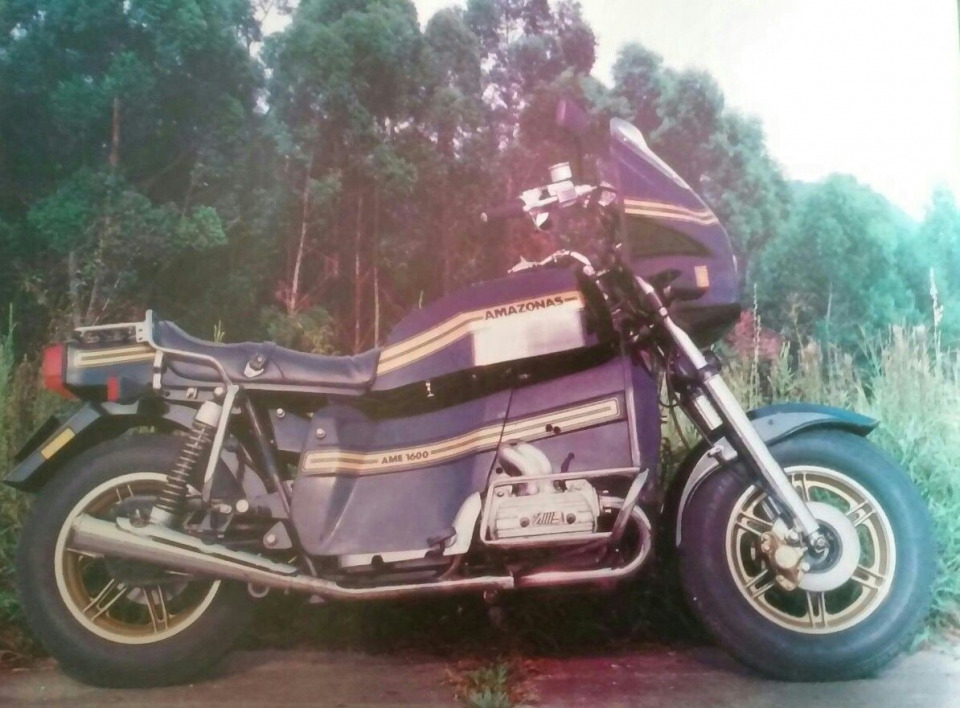
The motorcycle is big, like an old John Deere tractor. Learning to ride it takes more than just putting in the key and turning it on. I got to be pretty good with the 1986 model I used. I was deadly at hitting snakes in the road with it, could keep from scraping the side stand and even did a little lane splitting, but not at speed. The brakes teach you to plan well in advance, but then again I had just stepped off a 1947 Indian Chief from riding around in America, and it's(sic) brakes were a prayer. After several days I felt comfortable with the Brazilian Behemoth, and gradually learned to love it. This was a motorcycle which liked to be petted, even though it was huge and some say ugly. If you caressed it just right it would purr, all 800 pounds of it. Learning to ride it reminded me of what a Harley friend once said about his rather large wife, "She's a big girl and not very pretty but she treats me like a King, and I treat her like a Queen."
Once import restrictions were relaxed and modern motorcycles became available in the 1990s the Amazonas faded into obscurity. It is remembered by owners and half-mad enthusiasts - and the odd old-timer who remembers hearing about that weird motorcycle from South America with a flat four out of a Volkswagen. And no list of the world’s strangest, ugliest, most-awful bikes is ever complete without a nod towards the mighty 1600. The Amazonas was the product of ingenuity and desperate demand in a restricted market, reminiscent of the industry maintaining pre-embargo American cars in Cuba. It was noble and admirable, but certainly not conducive to the production of a modern and desirable motorcycle.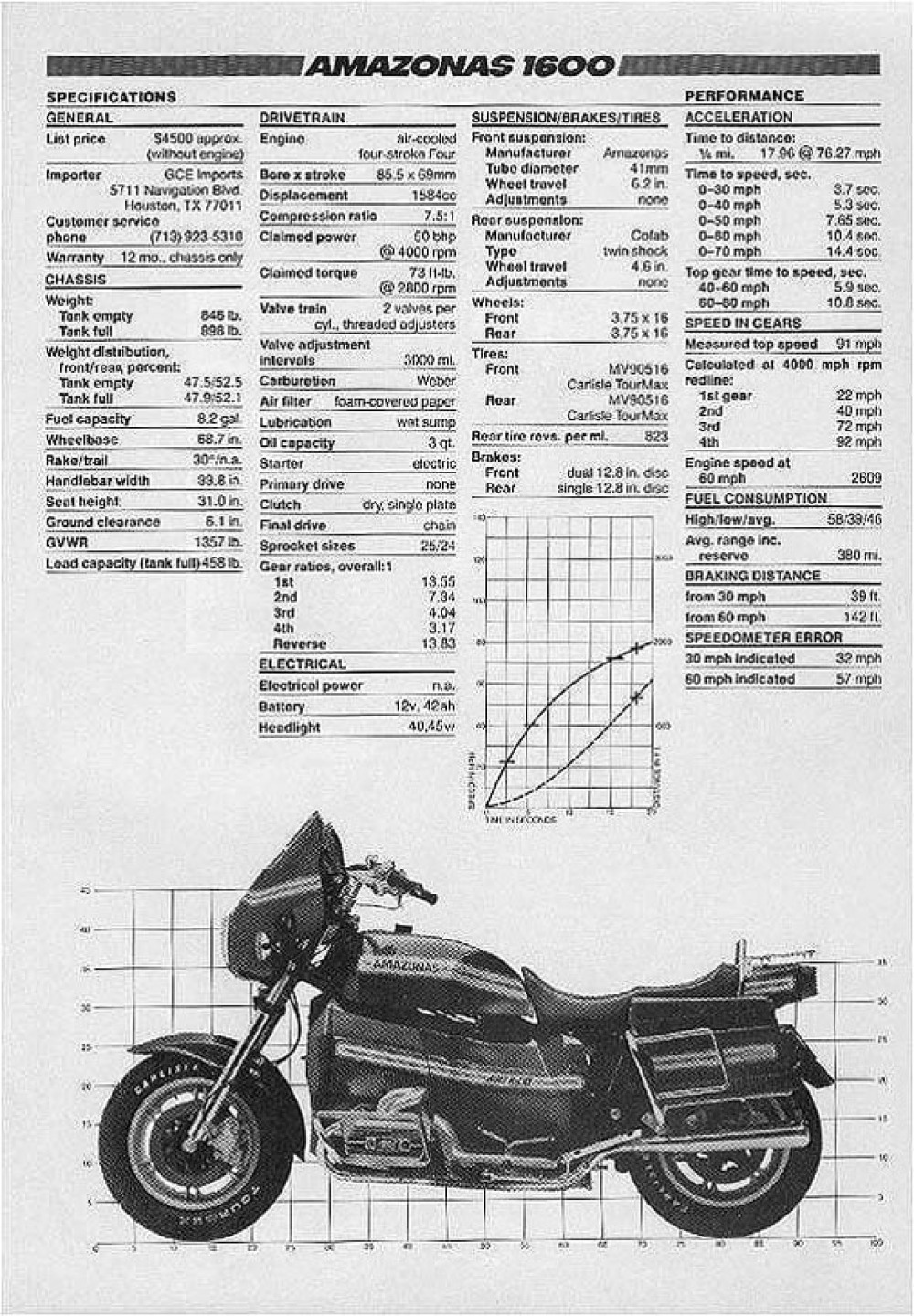
Interesting Links and Image Sources
✔️Cycle World Amazonas road test and hot-rod project.
✔️Greg Frazier's adventures on the Amazonas
Road test of the 1600.
✔️Oddbike
 Follow
4.8K
Follow
4.8K



